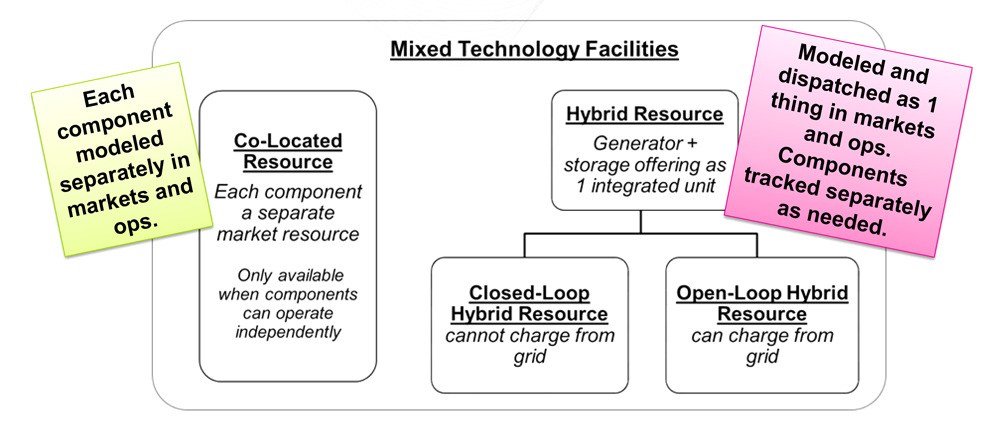Issue Charge OK’d on Internal NITS Process
VALLEY FORGE, Pa. — The PJM Operating Committee last week approved an issue charge on an initiative to ease the process for scheduling internal network integration transmission service (NITS).
The RTO said its current tariff makes little distinction between internal and external service requests, requiring all requests be studied to ensure sufficient headroom or the need for system upgrades. (Internal requests are for internal generation serving internal load; external/cross-border requests refer to external generation serving internal load or internal generation serving external load, respectively.)
The rules require internal NITS customers to notify PJM a year in advance of the expiration of their service that they want a rollover, as required for cross-border service, which the RTO termed a “valueless procedure.”
The initiative seeks to revise the tariff and manual language to differentiate between the two types of requests and reduce administrative burdens on entities using internal service.
PJM’s Susan McGill said no changes had been made since the issue’s first read in June. (See “Internal NITS Process,” PJM Operating Committee Briefs: June 9, 2022.) She said the issue could have been dealt with as a “quick fix” but that the RTO wanted to solicit members’ feedback.
The issue charge was approved by acclimation.
‘Quick Fix’ Changes OK’d for Manual 14D
Members also endorsed “quick fix” changes to Manual 14D: Generator Operational Requirements regarding the deactivation analysis timeline.
Current rules require notification of PJM at least 90 days in advance of the planned deactivation. Under the changes, desired deactivation dates would be no earlier than:
-
-
- July 1 of the current calendar year for notices received between Jan. 1 and March 31;
- Oct. 1 of the current calendar year for notices received between April 1 and June 30;
- Jan. 1 of the following calendar year for notices received between July 1 and Sept. 30; and
- April 1 of the following calendar year for notices received between Oct. 1 and Dec. 31.
-
PJM will study deactivations four times per year for all notices received prior to the study commencement dates (Jan. 1, April 1, July 1 and Oct. 1).

PJM’s Dave Egan explained actions that PJM will take to address stakeholders’ concerns over the transparency of reliability-must-run (RMR) contracts, which are used to keep a generating unit operating beyond its requested deactivation date to maintain reliability until necessary transmission upgrades can be completed.
In response, a generation owner can either file its proposed cost-of-service recovery rate (CSRR) with FERC or receive the deactivation avoidable cost credit (DACC) specified in the tariff.
Egan said PJM will announce it had requested a plant to extend its operations at the second read of the deactivation notice before the Transmission Expansion Advisory Committee. The RTO will announce at subsequent TEAC meetings when the generation owner submits a CSRR to FERC and after the commission accepts the CSRR filing or the generation owner agrees to the DACC.
Michelle Bloodworth, CEO of coal industry group America’s Power, said RMRs would be little more than “a Band-Aid fix if there’s a flood of retirements.”
Egan acknowledged that RMRs are used only to ensure transmission security and not resource adequacy.
“We’re not looking at the long-term future,” he said. “It’s done on a case-by-case basis.”
First Read for Hybrid Rules
PJM’s Andrew Levitt presented a first read on manual language conforming to FERC’s July 12 order accepting the RTO clarifying its rules for hybrid resources and mixed technology facilities (ER22-1420-002). PJM filed its proposal on March 22.
Changes will be made to Manual 10: Pre-Scheduling Operations for eDART reporting requirements and Manual 14D: Generator Operational Requirements for changes regarding metering requirements, outage reporting and voltage schedules, with a new section 13 for mixed technology facilities.
The OC will be asked to endorse the changes at its next meeting.
PPL Delays DLR Implementation to September
PJM’s Dave Hislop told the committee that PPL (NYSE:PPL) has delayed the implementation of dynamic line ratings on three circuits until mid-September because further work is needed to finalize changes to its energy management system with its vendor.
The changes to the double-circuit 230-kV Susquehanna-Harwood and the 230-kV Juniata-Cumberland lines are scheduled to take effect on Sept. 13 for the day-ahead market and Sept. 14 for real time.


